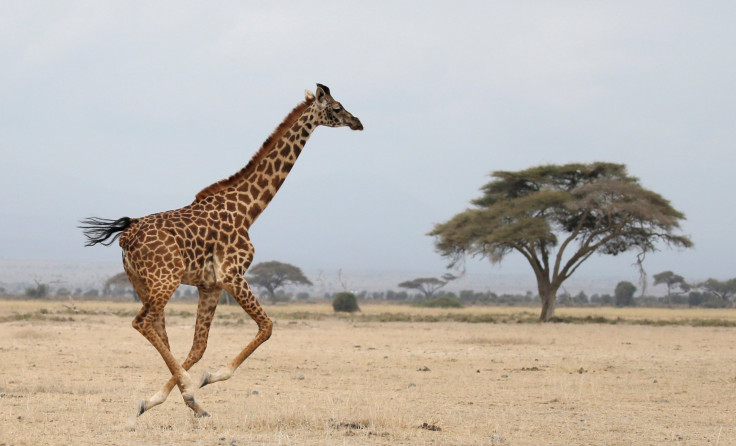Giraffe Now A Vulnerable Species, With Population Down 40% In 30 Years: IUCN

That human-induced climate change is an existentialist threat, in the most literal sense, to many species on Earth is well-established, and the numbers of large fauna, such as elephants and polar bears, are commonly brandished as evidence. However, in a new development that has caused some surprise, it turns out giraffes are also now a vulnerable species.
It is a remarkable development, because in the previous assessment by the International Union for Conservation of Nature, carried out in 2010, giraffes were listed in the IUCN Red List for of Threatened Species as “least concern,” the lowest threat categorization possible under the system. But the latest assessment, released Thursday at the ongoing 13th Conference of the Parties to the Convention on Biological Diversity in Cancun, Mexico, lists the tallest mammal on Earth as “vulnerable.”
In a statement, IUCN said: “The update … reveals a devastating decline for the giraffe, driven by habitat loss, civil unrest and illegal hunting. The global giraffe population has plummeted by up to 40 percent over the last 30 years, and the species has been listed as Vulnerable on the IUCN Red List.”
There are nine subspecies of the giraffe (Giraffa camelopardalis), and their total population has reduced from about 151,702-163,452 individuals in 1985 to 97,562 in 2015, according to IUCN. Three of the nine subspecies have increasing populations, one is stable while the remaining five are declining in numbers. “The populations of Giraffes are scattered and fragmented with different growth trajectories and threats, but the species trend reveals an overall large decline in numbers across their range in Africa,” according to the Red List entry for the animal.
“Whilst giraffes are commonly seen on safari, in the media and in zoos, people – including conservationists – are unaware that these majestic animals are undergoing a silent extinction. With a decline of almost 40% in the last three decades alone, the world's tallest animal is under severe pressure in some of its core ranges across East, Central and West Africa. As one of the world's most iconic animals, it is timely that we stick our neck out for the giraffe before it is too late,” Julian Fennessy, co-chair of the IUCN SSC Giraffe and Okapi Specialist Group, said in the statement.
Giraffes have already gone extinct in Eritrea, Guinea, Mauritania, Nigeria and Senegal, and possibly also in Mali, while it has been introduced in Rwanda and Swaziland. Fortunately for the species, its population is not severely fragmented, meaning there is a chance that, given reduced impact of human activities, the species could reverse its downward trend.
In September, a genetic study showed that giraffes could actually be four different species, but IUCN recognizes only one species.
© Copyright IBTimes 2024. All rights reserved.





















